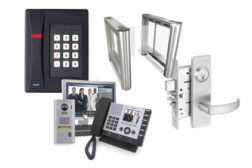Exclusives
State of the Market: Fire Protection 2012
Benjamin Franklin was savvy enough to put his wisdom into words regarding the ROI of fire prevention.
May 18, 2012
State of the Market: Access Control 2012
Smart cards, especially the new PIV-I card, managed access, and NFC all stand out in the 2012 access control market.
April 26, 2012
State of the Market: Video Surveillance 2012
The video surveillance market in 2012 shows a wide range of growth potential, in part due to disappearing barriers to adoption.
March 22, 2012
Be in the forefront of security intelligence when you receive SDM.
Join over 10,000+ professionals when you subscribe today.
SIGN UP TODAY!Copyright ©2024. All Rights Reserved BNP Media.
Design, CMS, Hosting & Web Development :: ePublishing




